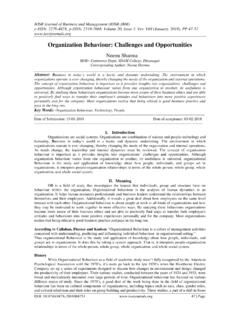Transcription of Reproducible Materials: DBT® Skills Training Manual ...
1 2015 Marsha M. Linehan Published by The Guilford Press A Division of Guilford Publications, Inc. 370 Seventh Avenue, Suite 1200, New York, NY 10001. All rights reserved LIMITED DUPLICATION LICENSE. The publisher grants to individual purchasers of DBT Skills Training Handouts and Worksheets, Second Edition, and DBT Skills Training Manual , Second Edition, nonassignable permission to reproduce these materials. This license is limited to you, the individual purchaser, for personal use or use with individual clients. This license does not grant the right to reproduce these materials for resale, redistribution, electronic display, or any other purposes (including but not limited to books, pamphlets, articles, video- or audiotapes, blogs, file-sharing sites, Internet or intranet sites, and handouts or slides for lectures, workshops, or webinars, whether or not a fee is charged). Permission to reproduce these materials for these and any other purposes must be obtained in writing from the Permissions Department of Guilford Publications.
2 The author has checked with sources believed to be reliable in her efforts to provide information that is complete and generally in accord with the standards of practice that are accepted at the time of publication. However, in view of the possibility of human error or changes in behavioral, mental health, or medical sciences, neither the author, nor the editor and publisher, nor any other party who has been involved in the preparation or publication of this work warrants that the information contained herein is in every respect accurate or complete, and they are not responsible for any errors or omissions or the results obtained from the use of such information. Readers are encouraged to confirm the information contained in this document with other sources. DBT is a registered trademark of Marsha M. Linehan. ii CONTENTS. General Skills : Orientation and Analyzing Behavior General Handouts Orientation Handouts General Handout 1: Goals of Skills Training General Handout 1a: Options for Solving Any Problem General Handout 2: Overview Introduction to Skills Training General Handout 3: Guidelines for Skills Training General Handout 4: Skills Training Assumptions General Handout 5: Biosocial Theory Handouts for Analyzing Behavior General Handout 6: Overview Analyzing Behavior General Handout 7: Chain Analysis General Handout 7a: Chain Analysis, Step by Step General Handout 8: Missing-Links Analysis Mindfulness Skills Mindfulness Handouts Handouts for Goals and Definitions Mindfulness Handout 1: Goals of Mindfulness Practice Mindfulness Handout 1a: Mindfulness Definitions Handouts for Core Mindfulness Skills Mindfulness Handout 2: Overview Core Mindfulness Skills Mindfulness Handout 3: Wise Mind States of Mind Mindfulness Handout 3a: Ideas for Practicing Wise Mind Mindfulness Handout 4.
3 Taking Hold of Your Mind What Skills Mindfulness Handout 4a: Ideas for Practicing Observing Mindfulness Handout 4b: Ideas for Practicing Describing Mindfulness Handout 4c: Ideas for Practicing Participating Mindfulness Handout 5: Taking Hold of Your Mind How Skills Mindfulness Handout 5a: Ideas for Practicing Nonjudgmentalness Mindfulness Handout 5b: Ideas for Practicing One- Mindfulness Mindfulness Handout 5c: Ideas for Practicing Effectiveness Handouts for Other Perspectives on Mindfulness Skills Mindfulness Handout 6: Overview Other Perspectives on Mindfulness Mindfulness Handout 7: Goals of Mindfulness Practice A Spiritual Perspective Mindfulness Handout 7a: Wise Mind from a Spiritual Perspective iii Mindfulness Handout 8: Practicing Loving Kindness to Increase Love and Compassion Mindfulness Handout 9: Skillful Means Balancing Doing Mind and Being Mind Mindfulness Handout 9a: Ideas for Practicing Balancing Doing Mind and Being Mind Mindfulness Handout 10: Walking the Middle Path Finding the Synthesis between Opposites Interpersonal Effectiveness Skills Interpersonal Effectiveness Handouts Handouts for Goals and Factors That Interfere Interpersonal Effectiveness Handout 1: Goals of Interpersonal Effectiveness Interpersonal Effectiveness Handout 2: Factors in the Way of Interpersonal Effectiveness Interpersonal Effectiveness Handout 2a: Myths in the Way of Interpersonal Effectiveness Handouts for Obtaining Objectives Skillfully Interpersonal Effectiveness Handout 3: Overview Obtaining Objectives Skillfully Interpersonal Effectiveness Handout 4: Clarifying Goals in Interpersonal Situations Interpersonal Effectiveness Handout 5: Guidelines for Objectives Effectiveness.
4 Getting What You Want Interpersonal Effectiveness Handout 5a: Applying DEAR MAN Skills to a Difficult Current Interaction Interpersonal Effectiveness Handout 6: Guidelines for relationship Effectiveness Keeping the relationship Interpersonal Effectiveness Handout 6a: Expanding the V in GIVE Levels of Validation Interpersonal Effectiveness Handout 7: Guidelines for Self- Respect Effectiveness Keeping Respect for Yourself (FAST). Interpersonal Effectiveness Handout 8: Evaluating Options for Whether or How Intensely to Ask for Something or Say No Interpersonal Effectiveness Handout 9: Troubleshooting When What You Are Doing Isn't Working Handouts for Building Relationships and Ending Destructive Ones Interpersonal Effectiveness Handout 10: Overview Building Relationships and Ending Destructive Ones Interpersonal Effectiveness Handout 11: Finding and Getting People to Like You Interpersonal Effectiveness Handout 11a: Identifying Skills to Find People and Get Them to Like You Interpersonal Effectiveness Handout 12: Mindfulness of Others Interpersonal Effectiveness Handout 12a: Identifying Mindfulness of Others Interpersonal Effectiveness Handout 13: Ending Relationships Interpersonal Effectiveness Handout 13a: Identifying How to End Relationships iv Handouts for Walking the Middle Path Interpersonal Effectiveness Handout 14: Overview Walking the Middle Path Interpersonal Effectiveness Handout 15.
5 Dialectics Interpersonal Effectiveness Handout 16: How to Think and Act Dialectically Interpersonal Effectiveness Handout 16a: Examples of Opposite Sides That Can Both Be True Interpersonal Effectiveness Handout 16b: Important Opposites to Balance Interpersonal Effectiveness Handout 16c: Identifying Dialectics Interpersonal Effectiveness Handout 17: Validation Interpersonal Effectiveness Handout 18: A How To Guide to Validation Interpersonal Effectiveness Handout 18a: Identifying Validation Interpersonal Effectiveness Handout 19: Recovering from Invalidation Interpersonal Effectiveness Handout 19a: Identifying Self- Validation Interpersonal Effectiveness Handout 20: Strategies for Increasing the Probability of Behaviors You Want Interpersonal Effectiveness Handout 21: Strategies for Decreasing or Stopping Unwanted Behaviors Interpersonal Effectiveness Handout 22: Tips for Using Behavior Change Strategies Effectively Interpersonal Effectiveness Handout 22a: Identifying Effective Behavior Change Strategies Emotion Regulation Skills Emotion Regulation Handouts Emotion Regulation Handout 1: Goals of Emotion Regulation Handouts for Understanding and Naming Emotions Emotion Regulation Handout 2: Overview.
6 Understanding and Naming Emotions Emotion Regulation Handout 3: What Emotions Do for You Emotion Regulation Handout 4: What Makes It Hard to Regulate Your Emotions Emotion Regulation Handout 4a: Myths about Emotions Emotion Regulation Handout 5: Model for Describing Emotions Emotion Regulation Handout 6: Ways to Describe Emotions Handouts for Changing Emotional Responses Emotion Regulation Handout 7: Overview Changing Emotional Responses Emotion Regulation Handout 8: Check the Facts Emotion Regulation Handout 8a: Examples of Emotions That Fit the Facts Emotion Regulation Handout 9: Opposite Action and Problem Solving . Deciding Which to Use Emotion Regulation Handout 10: Opposite Action v Emotion Regulation Handout 11: Figuring Out Opposite Actions Emotion Regulation Handout 12: Problem Solving Emotion Regulation Handout 13: Reviewing Opposite Action and Problem Solving Handouts for Reducing Vulnerability to Emotion Mind Emotion Regulation Handout 14: Overview Reducing Vulnerability to Emotion Mind: Building a Life Worth Living Emotion Regulation Handout 15: Accumulating Positive Emotions.
7 Short Term Emotion Regulation Handout 16: Pleasant Events List Emotion Regulation Handout 17: Accumulating Positive Emotions . Long Term Emotion Regulation Handout 18: Values and Priorities List Emotion Regulation Handout 19: Build Mastery and Cope Ahead Emotion Regulation Handout 20: Taking Care of Your Mind by Taking Care of Your Body Emotion Regulation Handout 20a: Nightmare Protocol, Step by Step . When Nightmares Keep You from Sleeping Emotion Regulation Handout 20b: Sleep Hygiene Protocol Handouts for managing Really Difficult Emotions Emotion Regulation Handout 21: Overview managing Really Difficult Emotions Emotion Regulation Handout 22: Mindfulness of Current Emotions Letting Go of Emotional Suffering Emotion Regulation Handout 23: managing Extreme Emotions Emotion Regulation Handout 24: Troubleshooting Emotion Regulation Skills . When What You Are Doing Isn't Working Emotion Regulation Handout 25: Review of Skills for Emotion Regulation Distress Tolerance Skills Distress Tolerance Handouts Distress Tolerance Handout 1: Goals of Distress Tolerance Handouts for Crisis Survival Skills Distress Tolerance Handout 2: Overview Crisis Survival Skills Distress Tolerance Handout 3: When to Use Crisis Survival Skills Distress Tolerance Handout 4: The STOP Skill Distress Tolerance Handout 5: Pros and Cons Distress Tolerance Handout 6: TIP Skills Changing Your Body Chemistry Distress Tolerance Handout 6a: Using Cold Water, Step by Step Distress Tolerance Handout 6b: Paired Muscle Relaxation, Step by Step Distress Tolerance Handout 6c: Effective rethinking and Paired Relaxation, Step by Step Distress Tolerance Handout 7: Distracting vi Distress Tolerance Handout 8: Self- Soothing Distress Tolerance Handout 8a: Body Scan Meditation Step by Step Distress Tolerance Handout 9.
8 Improving the Moment Distress Tolerance Handout 9a: Sensory Awareness, Step by Step Handouts for Reality Acceptance Skills Distress Tolerance Handout 10: Overview Reality Acceptance Skills Distress Tolerance Handout 11: Radical Acceptance Distress Tolerance Handout 11a: Radical Acceptance Factors That Interfere Distress Tolerance Handout 11b: Practicing Radical Acceptance Step by Step Distress Tolerance Handout 12: Turning the Mind Distress Tolerance Handout 13: Willingness Distress Tolerance Handout 14: Half- Smiling and Willing Hands Distress Tolerance Handout 14a: Practicing Half- Smiling and Willing Hands Distress Tolerance Handout 15: Mindfulness of Current Thoughts Distress Tolerance Handout 15a: Practicing Mindfulness of Thoughts Handouts for Skills When the Crisis Is Addiction Distress Tolerance Handout 16: Overview When the Crisis Is Addiction Distress Tolerance Handout 16a: Common Addictions Distress Tolerance Handout 17: Dialectical Abstinence Distress Tolerance Handout 17a: Planning for Dialectical Abstinence Distress Tolerance Handout 18: Clear Mind Distress Tolerance Handout 18a: Behavior Patterns Characteristic of Addict Mind and of Clean Mind Distress Tolerance Handout 19: Community Reinforcement Distress Tolerance Handout 20: Burning Bridges and Building New Ones Distress Tolerance Handout 21: Alternate Rebellion and Adaptive Denial vii General Handouts Orientation Handouts General Handout 1.
9 (General Worksheet 1 ) 72 .p ;.. Goals of Skills Training General Goal To learn how to change your own behaviors, emotions, and thoughts that are linked to problems in living and are causing misery and distress. Specific Goals Behaviors to Decrease: Mindlessness; emptiness; being out of touch with self and others; judgmentalness.. Interpersonal conflict and stress; loneliness.. Absence of flexibility; difficulties with change.. Up-and-down and extreme emotions; mood- dependent behavior; difficulties in regulating . emotions. Impulsive behaviors; acting without thinking; difficulties accepting reality as it is; willfulness;.. addiction. Skills to Increase: Mindfulness Skills .. Interpersonal effectiveness Skills .. Emotion regulation Skills .. Distress tolerance Skills .. Personal Goals Behaviors to Decrease: 1. 2. 3. Skills to Increase: 1. 2. 3. From DBT Skills Training Handouts and Worksheets, Second Edition, by Marsha M. Linehan. Copyright 2015 by Marsha M. Linehan. Permis- sion to photocopy this handout is granted to purchasers of DBT Skills Training Handouts and Worksheets, Second Edition, and DBT Skills Training Manual , Second Edition, for personal use and use with individual clients only.
10 (See page ii of this packet for details.). General Handout 1a . Options for Solving Any Problem When life presents you with problems, what are your options? 1. Solve the Problem Change the situation .. or avoid, leave, or get out of the situation for good. 2. Feel Better about the Problem Change (or regulate) your emotional response to the problem. 3. Tolerate the Problem Accept and tolerate both the problem and your response to the problem. 4. Stay Miserable Or possibly make it worse! 1. To Problem-Solve: Use interpersonal effectiveness Skills Walking the Middle Path (from interpersonal effectiveness Skills ). Use problem- solving Skills (from emotion regulation Skills ). 2. To Feel Better about the Problem: Use emotion regulation Skills 3. To Tolerate the Problem: Use distress tolerance and mindfulness Skills 4. To Stay Miserable: Use no Skills ! From DBT Skills Training Handouts and Worksheets, Second Edition, by Marsha M. Linehan. Copyright 2015 by Marsha M. Linehan. Permis- sion to photocopy this handout is granted to purchasers of DBT Skills Training Handouts and Worksheets, Second Edition, and DBT Skills Training Manual , Second Edition, for personal use and use with individual clients only.












